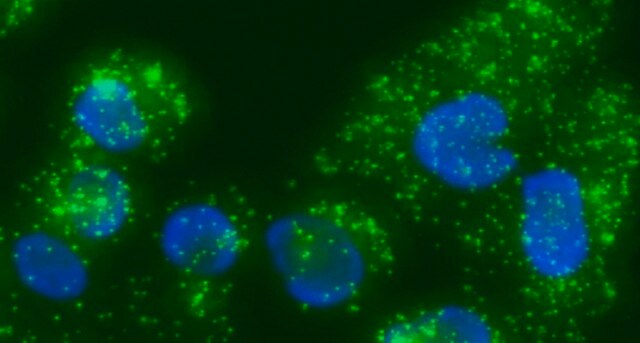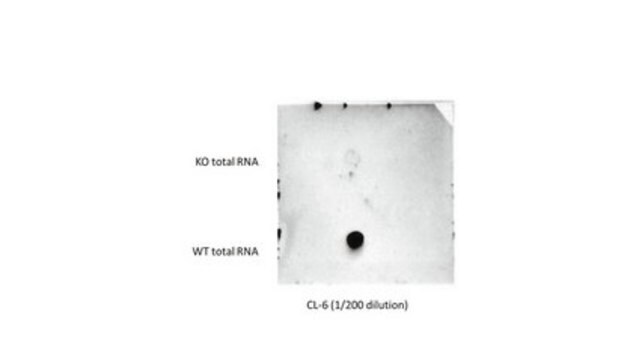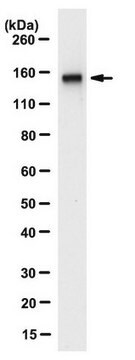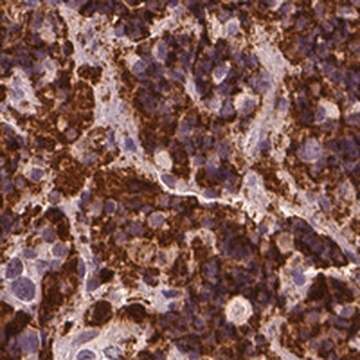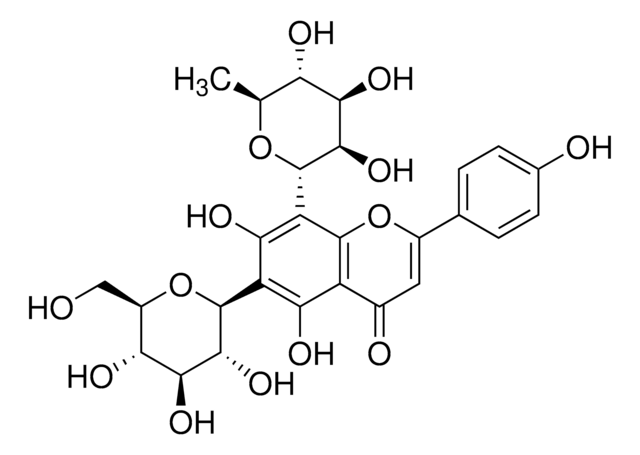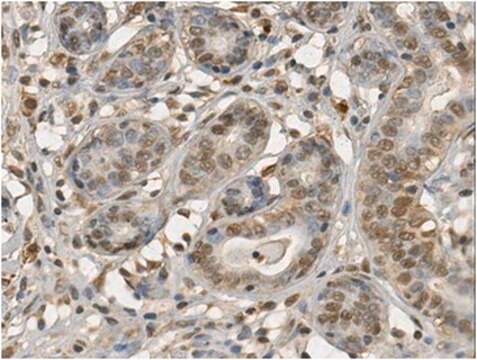MABT1489
Anti-Kinesin Light Chain Antibody, clone 63-90
clone 63-90, from mouse
Synonim(y):
KLC1, KLC2, KLC
About This Item
IP
WB
immunoprecipitation (IP): suitable
western blot: suitable
Polecane produkty
pochodzenie biologiczne
mouse
forma przeciwciała
purified antibody
rodzaj przeciwciała
primary antibodies
klon
63-90, monoclonal
reaktywność gatunkowa
squid, rat, mouse
opakowanie
antibody small pack of 25 μg
metody
immunohistochemistry: suitable (paraffin)
immunoprecipitation (IP): suitable
western blot: suitable
izotyp
IgG1κ
numer dostępu NCBI
docelowa modyfikacja potranslacyjna
unmodified
informacje o genach
rat ... Klc1(171041)
Powiązane kategorie
Opis ogólny
Specyficzność
Immunogen
Zastosowanie
Western Blotting Analysis: 4 µg/mL from a representative lot detected Kinesin Light Chain in rat brain tissue lysate.
Immunoprecipitation Analysis: A representative lot immunoprecipitated Kinesin Light Chain in Immunoprecipitation applications (Stenoien, D., et. al. (1997). Mol Biol Cell. 8(4):675-89).
Immunohistochemistry Analysis: A representative lot detected Kinesin Light Chain in Immunohistochemistry applications (Rahman, A., et. al. (1998). J Biol Chem. 273(25):15395-403).
Western Blotting Analysis: A representative lot detected Kinesin Light Chain in Western Blotting applications (Rahman, A., et. al. (1998). J Biol Chem. 273(25):15395-403; Stenoien, D., et. al. (1997). Mol Biol Cell. 8(4):675-89; Pigino, G., et. al. (2009). Proc Natl Acad Sci U S A. 106(14):5907-12; Pigino, G., et. al. (2003). J Neurosci. 23(11):4499-508).
Cell Structure
Jakość
Immunohistochemistry (Paraffin) Analysis: A 1:50 dilution of this antibody detected Kinesin Light Chain in rat hippocampus tissue sections.
Opis wartości docelowych
Postać fizyczna
Przechowywanie i stabilność
Inne uwagi
Oświadczenie o zrzeczeniu się odpowiedzialności
Nie możesz znaleźć właściwego produktu?
Wypróbuj nasz Narzędzie selektora produktów.
Kod klasy składowania
12 - Non Combustible Liquids
Klasa zagrożenia wodnego (WGK)
WGK 1
Temperatura zapłonu (°F)
Not applicable
Temperatura zapłonu (°C)
Not applicable
Certyfikaty analizy (CoA)
Poszukaj Certyfikaty analizy (CoA), wpisując numer partii/serii produktów. Numery serii i partii można znaleźć na etykiecie produktu po słowach „seria” lub „partia”.
Masz już ten produkt?
Dokumenty związane z niedawno zakupionymi produktami zostały zamieszczone w Bibliotece dokumentów.
Nasz zespół naukowców ma doświadczenie we wszystkich obszarach badań, w tym w naukach przyrodniczych, materiałoznawstwie, syntezie chemicznej, chromatografii, analityce i wielu innych dziedzinach.
Skontaktuj się z zespołem ds. pomocy technicznej

